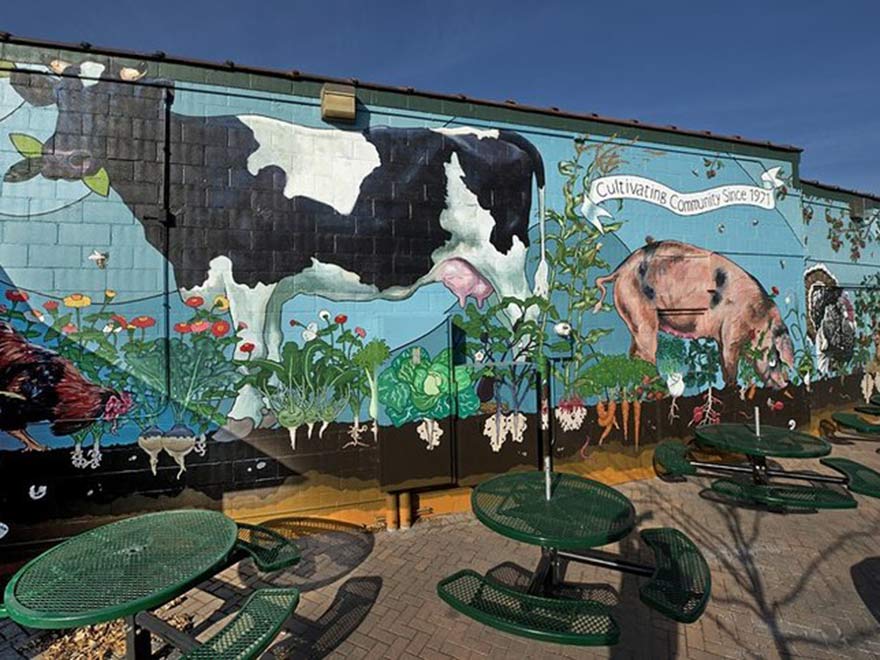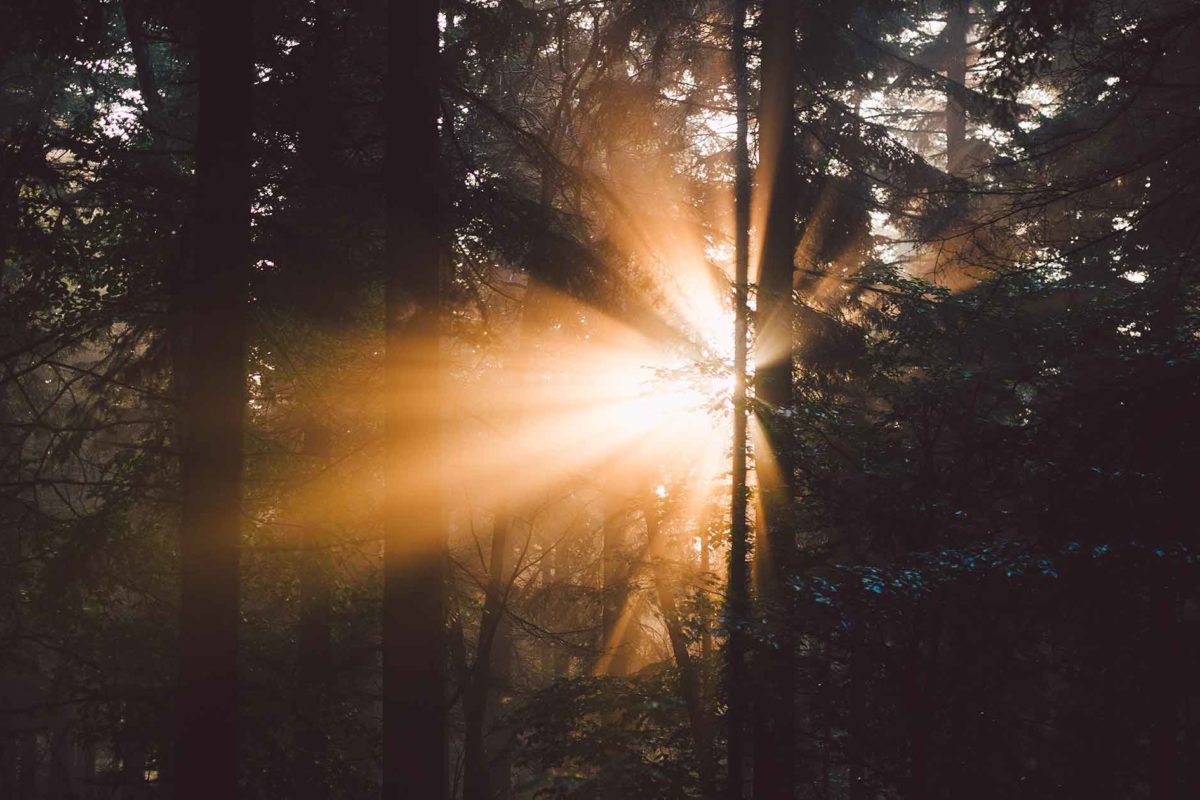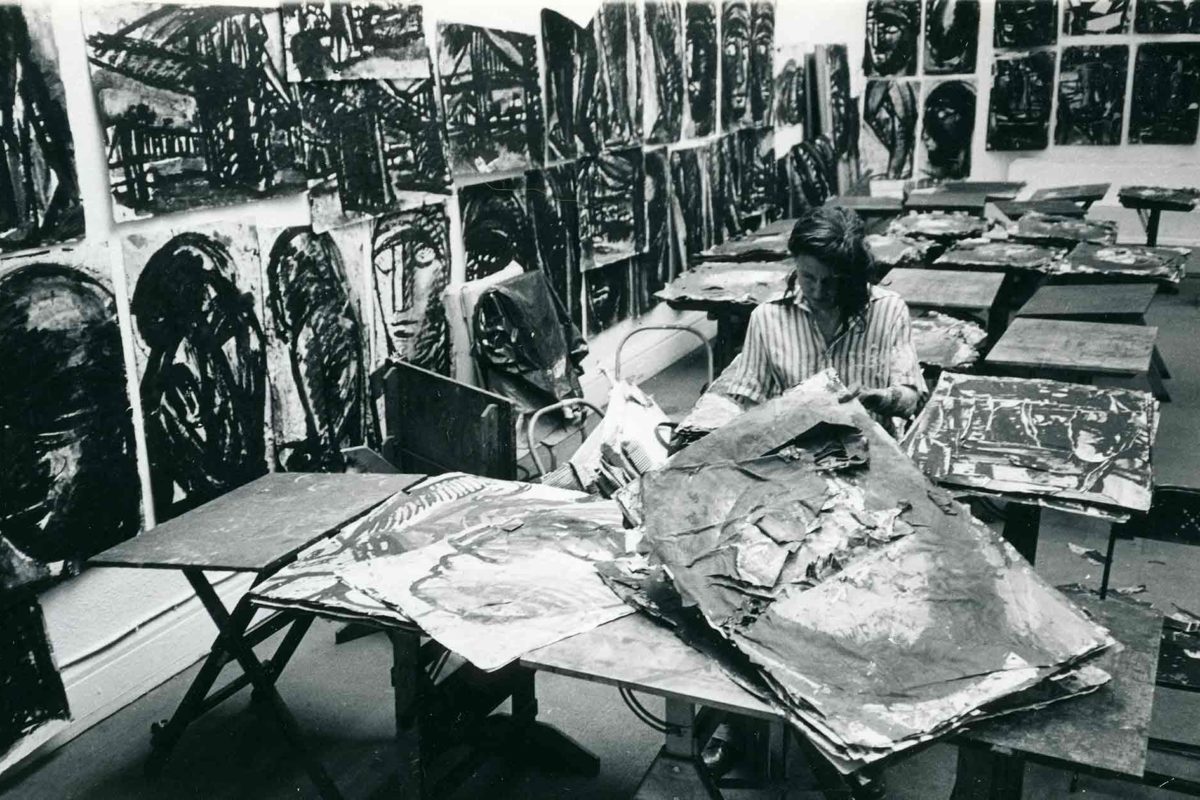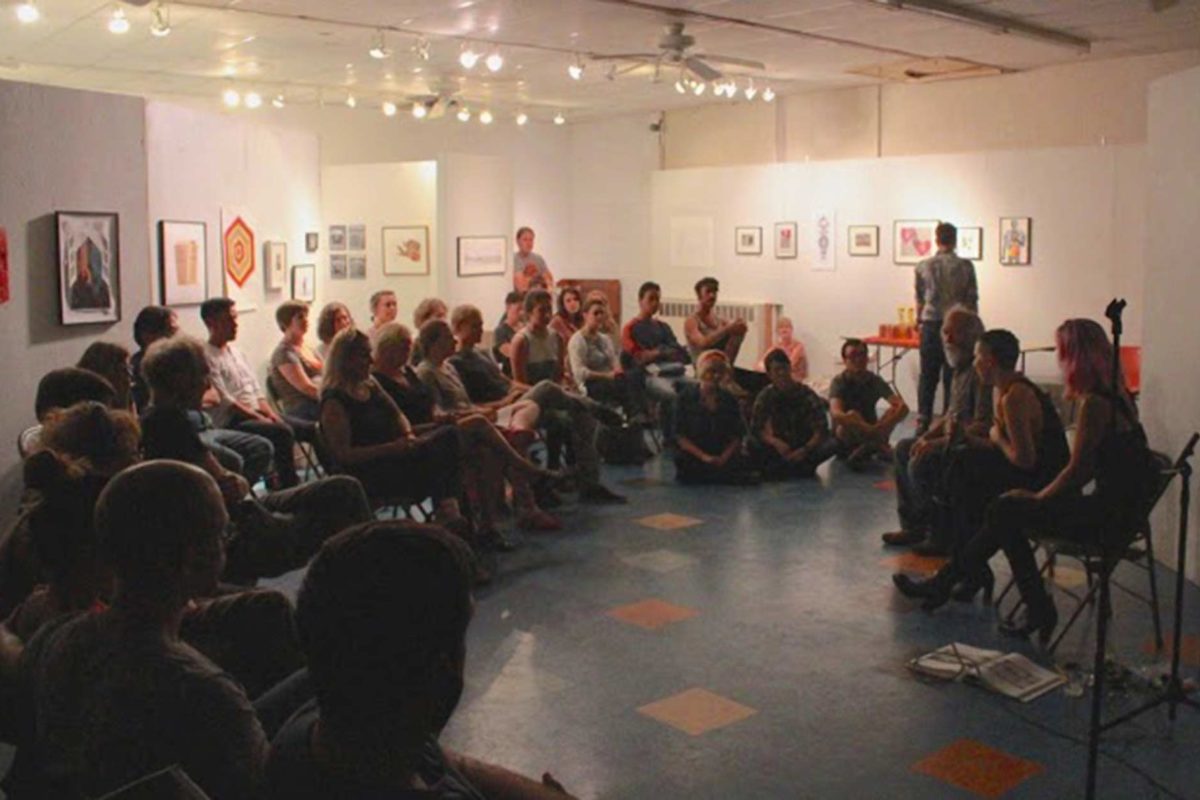“When tillage begins, other arts follow. The farmers, therefore, are the founders of human civilization.” – Daniel Webster
Human civilization was founded on farming. The transition from a migratory hunter-and-gatherer existence to the domestication of animals and planting of crops allowed us to form tribes and develop communities. Working the land is an innately human activity that is deeply rooted within each of us. For the artist, Thomas Agran, spending time biking around Grinnell during his undergraduate degree in studio arts forever bonded him to the Iowa landscape. This interest in agronomy led to a job at Grinnell Heritage Farms where sustainable agricultural practices yield produce that transfers directly from farmer to people’s tables through farmers’ markets and community supported agriculture (CSA). Further time was spent on a farm in Italy for a semester followed by an entire season at Grinnell Heritage Farms. Thomas subsequently completed his MFA in painting at Indiana University in 2013 and returned to Iowa City where he has quickly established himself as an artistic force within the Corridor. From fine art, to park benches, to facades and large scale murals, his work assimilates and enhances the surrounding community.
“We have neglected the truth that a good farmer is a craftsman of the highest order, a kind of artist,” – Wendell Berry
What began as an interest in farming turned into a passion for art that explores our relationship to the land and animals we employ for our own survival. Looking through Agran’s portfolio, you will find all manner of art from paintings of plump, friendly farm animals to abstract seas of faceless cows packed into a feedlot to aerial farm views contrasting the patchwork allure of the landscape and the corruption of waterways through farm runoff. Farming today demonstrates the same extremes between the beyond-organic pastoral family farms to the mega-industrial farms and feedlots. To many, the world of agriculture seems simple, but the reality is that there are many issues going on behind the scenes that get grossly overlooked as we stroll the supermarket aisle picking out our meat and produce. Agran’s work opens our eyes to the capitalization of agriculture, to question what we buy and consume and how it got there in the first place.
“I have a longstanding interest in agriculture and farming both hands on and politically. I have a hard time coming to terms with my aesthetic attraction to industrial farming and my intellectual frustrations with it. I’ve been trying to use my work as a tool to explore that relationship, and hopefully provide viewers a new lens with which to observe the land around them.” – Thomas Agran
If you look closely at what we tend to eat, it is far removed from the family farm of yesteryear. The advancement of agricultural science has lead to genetically modified seed monoculture, industrial fertilizer, pesticides and feedlots “in the pursuit of maximizing ‘efficiency’ and profit, at the expense of the economies of small towns, rural life and culture, and the environment.”
“The imagery is still the same. How it is gathered or collected or managed is so different. I think if you look around and just think all those corn plants are a little tiny machine, suddenly the landscape looks different. It just happens to be that they’re living. It’s not an ecology.” – Thomas Agran

These realities of modern farming and food production have downstream effects that some may find objectionable; however, the pace at which today’s society functions leaves little time for growing or hunting our food, preserving the surplus, or even planning a meal. Industrialized agriculture has arisen to combat our lack of time, to provide products that can be frozen, microwaved, stored indefinitely, and eaten on the run.
“Knowing the darker side of the bucolic and appreciating the aesthetic side of the industrial creates paradigms for finding the landscape’s hidden burdens and unexpected attractions. I am attempting to come to terms with a vast and alternatingly violent and beautiful landscape – one I am visually attracted to, philosophically opposed to, and entirely surrounded by.” – Thomas Agran
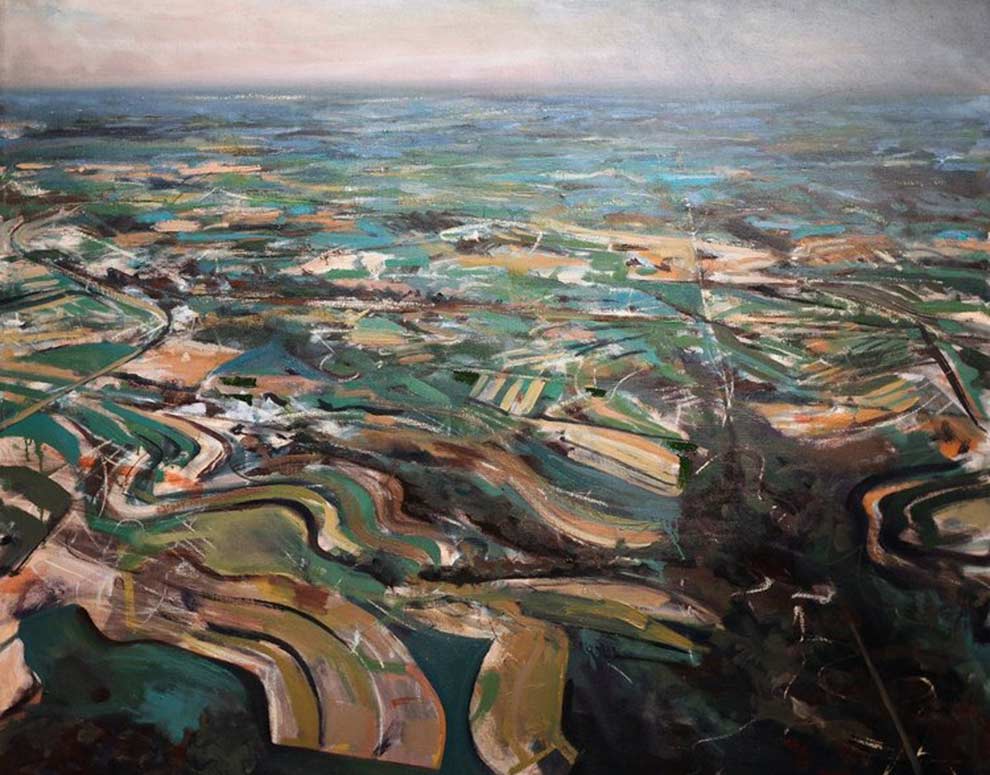
Agran’s fine art work focuses on the changes made to the landscape due to industrialized farming. These works are large, abstract, powerful, pieces that evoke the very nature of the manipulation of the land. Other works, such as several of his larger murals, have depicted the unspoiled, idyllic nature of farming; one portraying a bountiful harvest and content, free-range, pasture fed livestock. He now finds himself doing a summer mural season and a winter studio season, both of which he enjoys for different reasons.
 When asked about one his most rewarding moments as an artist, Thomas does not mention gallery representation, exhibitions, or major commissions, although he has had them all. Instead, he recounts a story from graduate school where he painted a large angus bull on a wall in the art building. The janitor, who had never said a word to the students, saw the work and inquired as to whom had painted the picture. He shared with Thomas memories about his childhood and the cattle he had helped raise. The image had spoken to him, touched on memories that had long been forgotten. For Agran, this was a revelation to the power of public art and the attraction in even the most humble of things.
When asked about one his most rewarding moments as an artist, Thomas does not mention gallery representation, exhibitions, or major commissions, although he has had them all. Instead, he recounts a story from graduate school where he painted a large angus bull on a wall in the art building. The janitor, who had never said a word to the students, saw the work and inquired as to whom had painted the picture. He shared with Thomas memories about his childhood and the cattle he had helped raise. The image had spoken to him, touched on memories that had long been forgotten. For Agran, this was a revelation to the power of public art and the attraction in even the most humble of things.
“I think artists, and particularly those working observationally, are in a good position to teach people how to look at their world in a slower way — a way a lot of people have forgotten or never learned.” – Thomas Agran
When he is not painting, Agran keeps busy teaching drawing at the University of Iowa and Cornell College. He also works as the director of art for the Iowa City Downtown District, working toward advancing the goal of bringing community art into the Downtown and enhancing the Downtown Iowa City experience.
“Large community studio facilities are coming online in cities across the country, and Iowa City needs to get their act together and make that resource a reality in our own community. I would love to see a community driven, co-operative model for a large studio facility in Iowa City, with a satellite gallery space in the heart of downtown.” – Thomas Agran
As a farmer, cook, muralist, and fine artist, Thomas incorporates a myriad of tools, processes, and principles, each drawing from his creative wellspring. You may find him at the farmers’ market selling sweet and savory tarts with homegrown ingredients, painting a large mural on the side of a building downtown with a host of community members, working efficiently on a painting at his carriage house studio, or simply spending time with his family. For Thomas, art is a way of life, it’s a “tool, like any other, to help record, react, and learn more about the world around us.”




